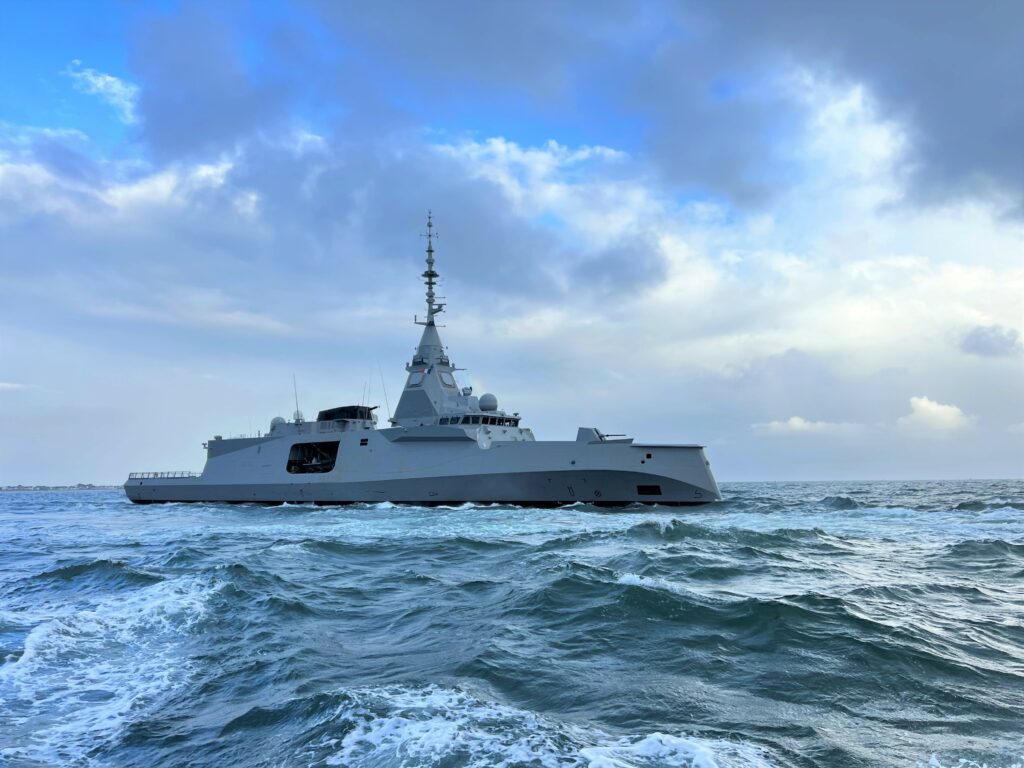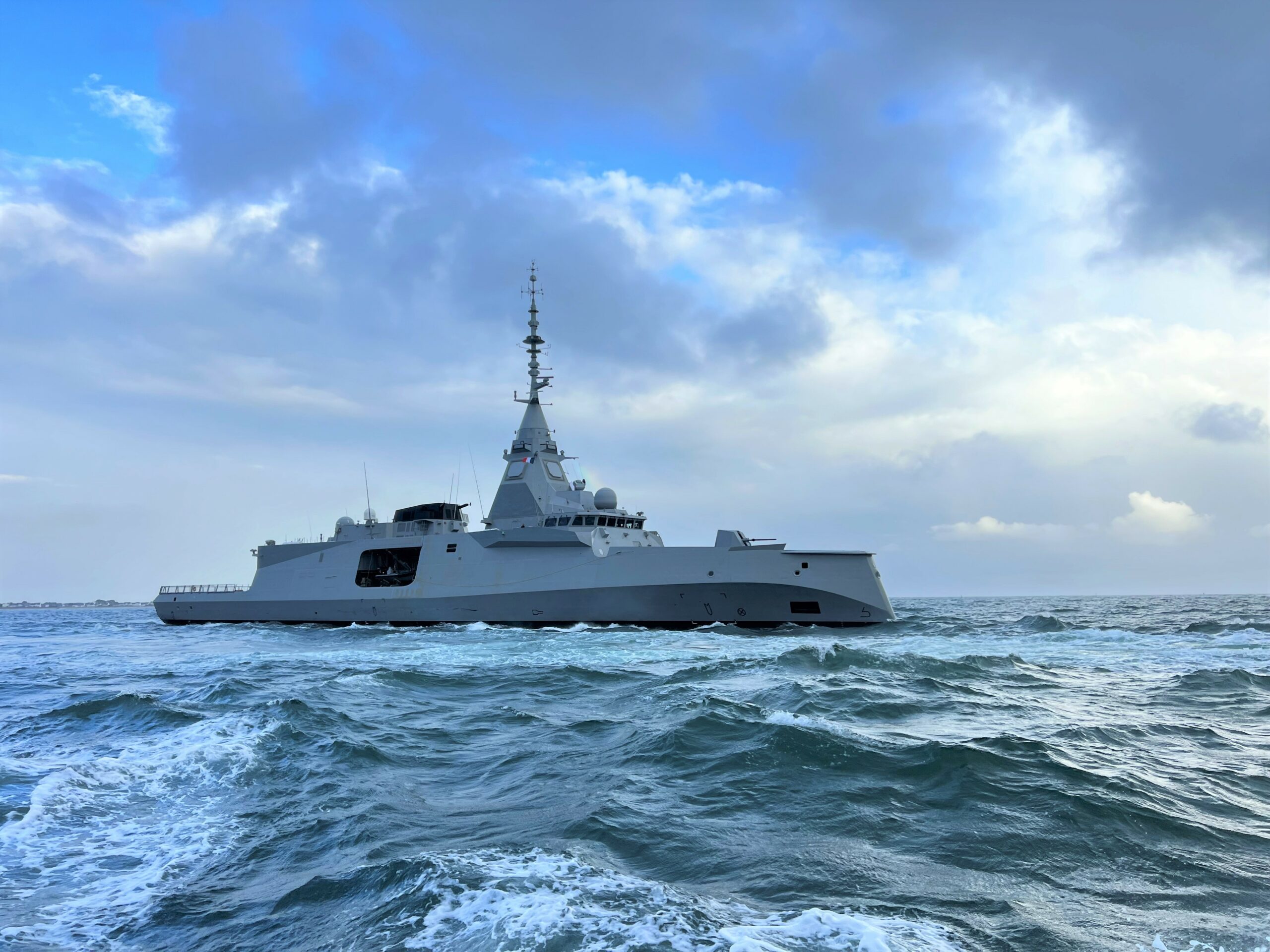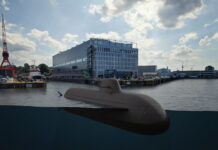The first of the French Navy’s future defence and intervention frigates (FDIs), Amiral Ronarc’h, began its sea trials out of Lorient in Brittany on 7 October 2024, French shipbuilder Naval Group has announced.
Launched at the end of 2022, Amiral Ronarc’h is the first of five FDI frigates being built by Naval Group for the French Navy under a contract awarded in 2017. The ship’s sea trials will enable its crew to get to grips with their future ship and to test all the systems and equipment in real-life situations. As the Amiral Ronarc’h is the first unit in the FDI programme, the feedback from its trials will benefit the other ships ordered by the French Navy, as well as three similar but more heavily armed vessels being built for the Hellenic Navy. The first two Greek frigates, HS Kimon and HS Nearchos, were launched in October 2023 and September 2024 respectively.
Unlike initial tests usually carried out on frigates, the tests on Amiral Ronarc’h will go beyond the simple parameters of navigation and propulsion, with tests also being carried out on the ship’s combat systems in real conditions at sea.
The 4,500-tonne FDIs, according to Naval Group, are multipurpose, resilient high-sea vessels capable of operating alone or as part of a naval force in all areas of combat: anti-ship, anti-air, anti-submarine, against asymmetric threats and for special forces projection. They are 122 m long, have a beam of 18 m, will capable of speeds of 27 kts (50 km/h) and will have an endurance at sea of 45 days. The ships will accommodate a crew of 125 and can carry 28 additional personnel.
“Bringing together the best of French naval technologies on a compact platform, the FDI is a powerful and innovative frigate, designed to cope with constantly evolving threats,” Naval Group stated.
Designed and produced using latest-generation digital tools, the FDI frigates are also the first such vessels to benefit onboard from a digital architecture that will enable them to adapt continuously to technological and operational developments. “As a result, the FDIs will be able to deal with current and future high-spectrum threats, with 360° coverage in all frequency bands, and process an ever-increasing amount of data,” according to Naval Group.
The FDIs will be armed with Exocet MM40 anti-ship missiles, ASTER surface-to-air missiles (SAMs), MU90 anti-submarine torpedoes and guns of various calibres. The ships built for the French Navy will be able to accommodate a 10-tonne-class helicopter, such as the Caïman Marine or future Guépard Marine, an unmanned aerial system and two commando boats to deploy special forces. The frigates are equipped with the new-generation Sea Fire radar with four fixed panels, developed by Thales, which, combined with their missile systems, gives them extended area defence capabilities.
The FDIs will also be the first French frigates to be natively protected against cyber threats, with a redundant IT architecture based around two data centres that host, in a virtualised manner, a large proportion of the ship’s IT applications.
“In terms of operational innovation, the FDI is inaugurating the concept of a gateway dedicated to combating asymmetric threats. This system will make it possible to co-ordinate and lead the fight against small, close air and surface threats, in particular booby-trapped craft,” Naval Group stated.














